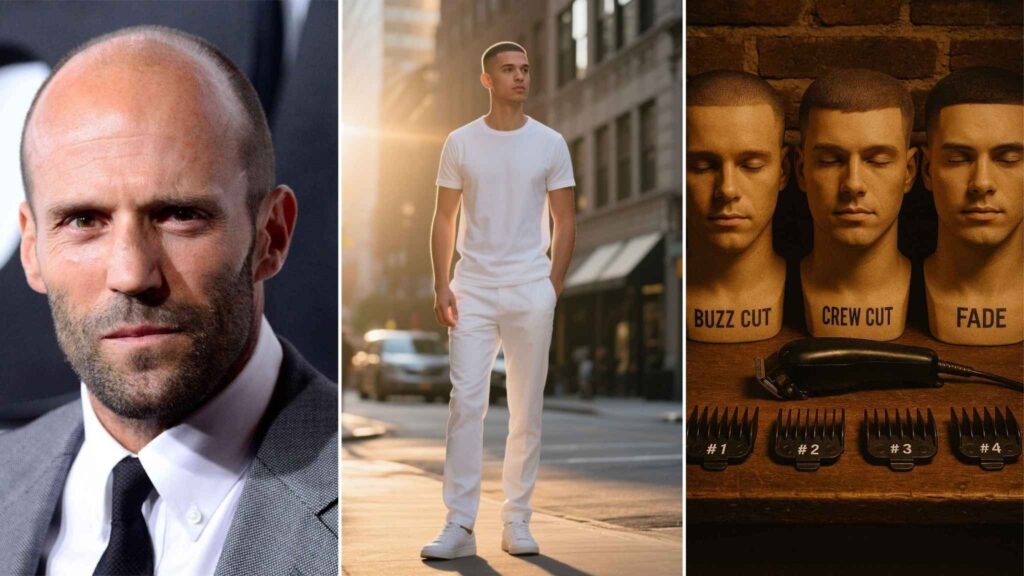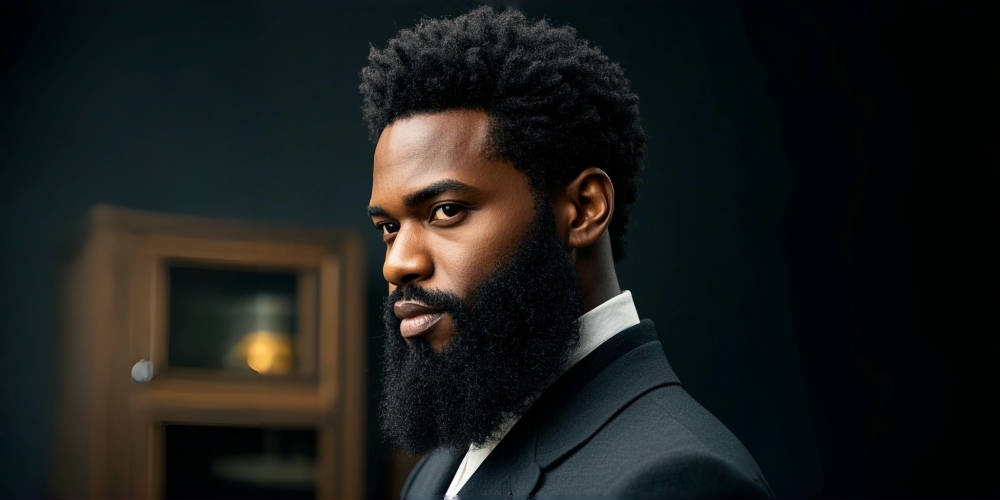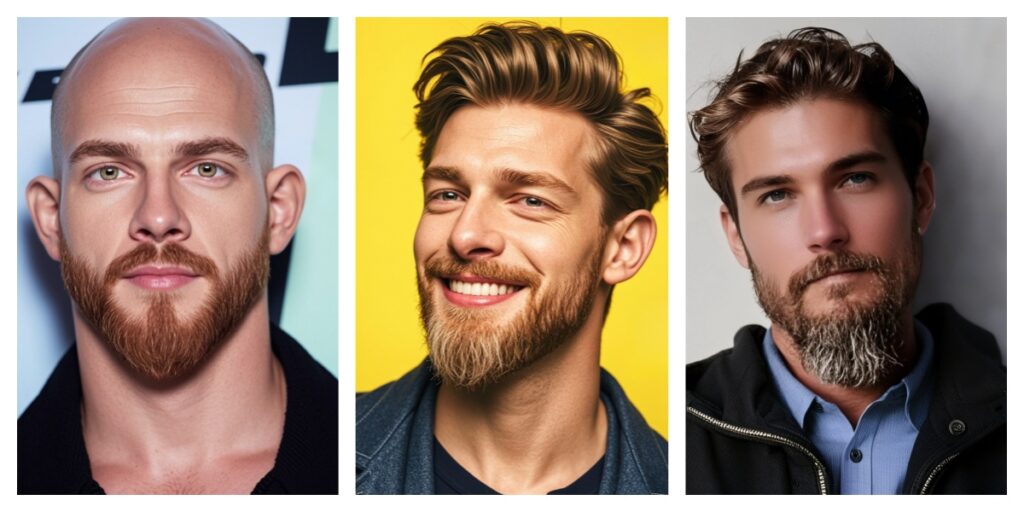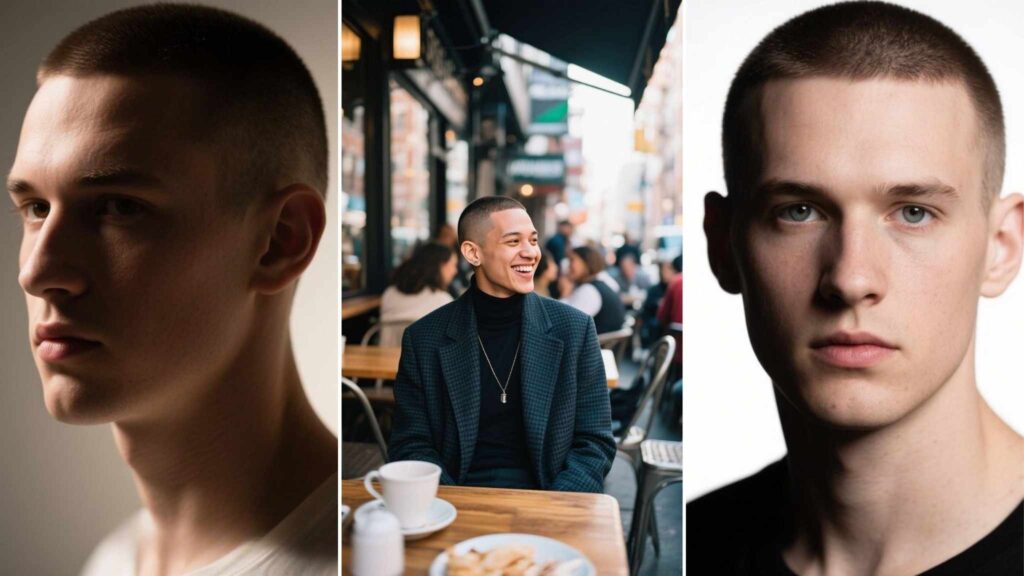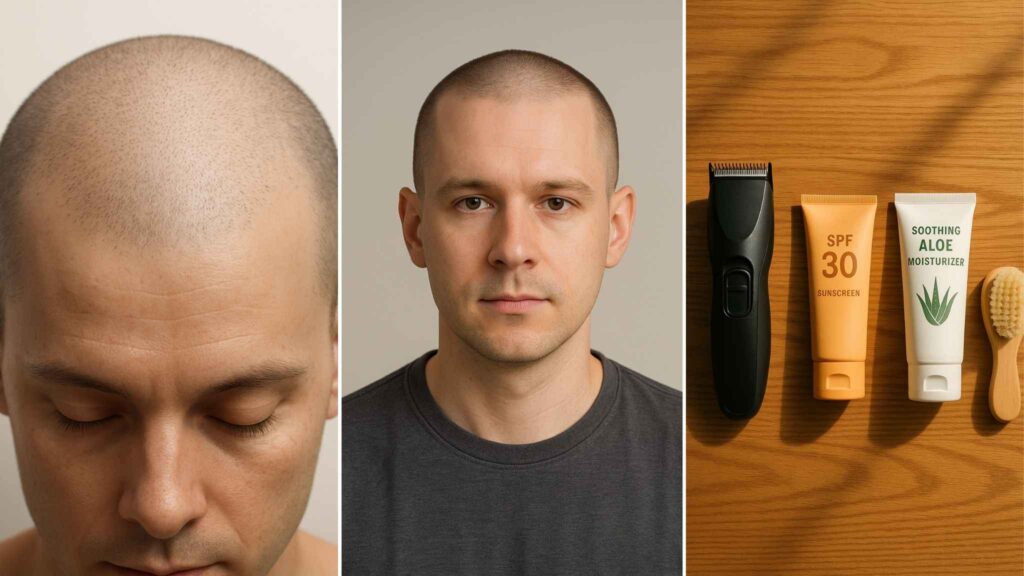Introduction
“Will a buzz cut make my forehead look even bigger?” It’s a question many people with a pronounced hairline ask before reaching for the clippers. While the fear is understandable, a buzz cut is less about the centimeters above your brow and more about proportion, attitude, and how you frame the rest of your face. This article breaks down the factors that really matter—forehead size, overall head shape, and personal style—to help you decide whether a crop that short will flatter you or simply expose insecurities you don’t need to feel. By the end, you’ll have practical tips, style tweaks, and a healthy dose of confidence to guide your next trip to the barber.
1. Understanding Your Forehead and Face Shape
A “big forehead” isn’t a medical measurement; it’s a perception. Generally, people label a forehead “large” when the distance from the top of the brows to the hairline exceeds one-third of total face length. But that single measurement rarely tells the whole story. What truly dictates balance is how that forehead interacts with cheekbones, jawline, and the width of the face.
Proportion is the secret sauce of every great haircut. A buzz cut, because of its uniform shortness, removes the distraction of longer hair that might otherwise hide or shorten the forehead. That means the face itself takes center stage at all angles. For oval faces—where length slightly exceeds width—a buzz cut often looks naturally balanced no matter the forehead size. Square and rectangle faces already have strong lines; cropping the hair can amplify chiseled edges while making a taller forehead appear almost architectural. Round faces, by contrast, benefit from nuanced clipper lengths (think a subtle fade) that add verticality without widening the silhouette.
Different buzz cut variations can be tuned to play to these proportions. A high skin fade beneath a #3 guard on top elongates a rounder head, while a uniform #1 buzz paired with a neat lineup keeps everything minimal on a square face. Understanding where you sit on the face-shape spectrum is the first step to predicting how “big” your forehead will feel once the hair is short.

2. How Buzz Cuts Highlight or Balance Features
Buzz cuts remove the curtain. Without fringe or layered sides, your eyes, brows, and—yes—forehead get more visual real estate. That’s not inherently bad; it simply means your facial features become bolder in the absence of hairstyle flourishes.
On one hand, the bare scalp above the temples can make a high hairline or widow’s peak more obvious. If those details bother you, you may need to offset them with precise clipper work—like a temple fade—or by embracing a slightly longer guard (a #4 rather than a #1). On the other hand, a clean buzz can create a deliberate, almost sculptural look that celebrates bone structure. Consider actors such as Jason Statham, Djimon Hounsou, or Natalie Portman in “V for Vendetta.” All have buzzed-down styles that frame expansive foreheads without diminishing their appeal. Their secret lies in symmetry, sharp grooming elsewhere, and body language that says, “This is my look.”
What many people overlook is how the absence of hair opens space for other focal points. Your eyes appear larger, your smile brighter, and your jawline more defined. This redistribution of attention often reduces the psychological “size” of the forehead. In photography, stylists talk about negative space directing the viewer’s eye; a buzz cut uses the same design principle.
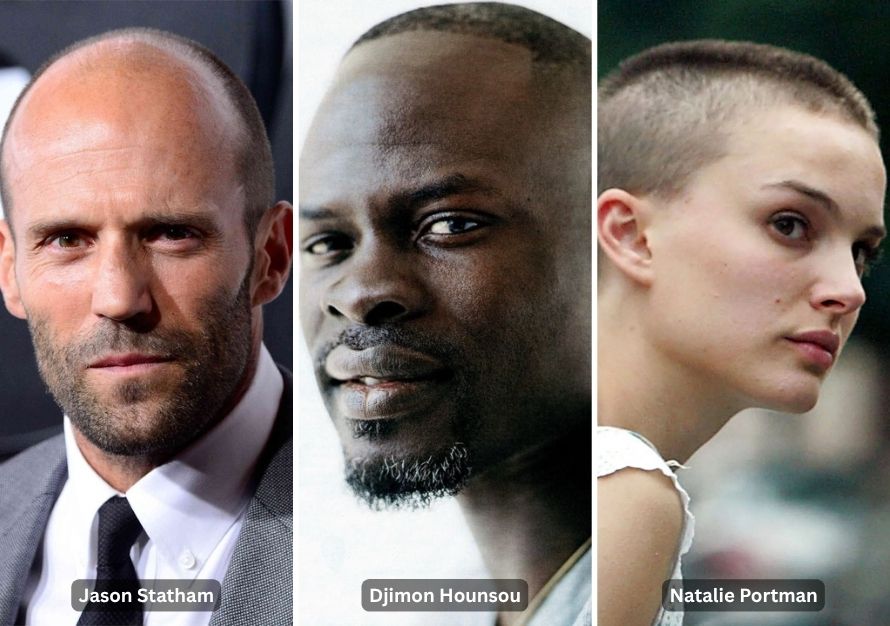
3. Styling Tips for a Buzz Cut with a Big Forehead
A. Choose the right guard length. The numeric clipper guards (#1 through #4) correspond to 1/8-inch increments. A #1 or #2 gives a military-close finish that can exaggerate curvature but also creates the cleanest, boldest outline. A #3 or #4 maintains a velvet texture that softens transitions from scalp to skin, making the forehead blend more subtly into the hairstyle.
B. Incorporate fades and lineups. A low skin fade tapers the sides to bare skin while leaving short length on top, visually slimming the width of the head. A mid fade adds sculptural contour at eye level. Sharp lineups at the temples and across the forehead draw deliberate shapes that make a high hairline look intentional rather than receding.
C. Leverage facial hair. A neatly groomed beard or stubble balances the vertical real estate by bringing interest downward. Even a tight goatee can create proportional harmony between upper and lower face.
D. Accessorize strategically. Caps, bucket hats, or beanies in breathable fabrics let you change your look on the fly, especially on sunny days where scalp exposure might feel intense. Sunglasses with thicker frames also shorten perceived forehead height by adding a horizontal break across the face.
E. Maintain the cut frequently. Buzz cuts look sharp when edges are crisp. Plan for a shape-up every two to three weeks. Regular upkeep prevents uneven grow-out that could emphasize the very forehead lines you’re trying to downplay.

4. Confidence and Personal Style Matter Most
Hair is part science, part attitude. Any stylist will tell you the same buzz cut can look radically different depending on posture, fashion choices, and how a person carries themselves. Confidence is contagious; it convinces onlookers that every feature—big forehead included—belongs exactly where it is.
If you’re apprehensive, test-drive a shorter cut before going full buzz. Try trimming the top to a #6 or #7 clipper length first. Pair that with a tapered side fade so you can preview your head shape without fully committing. Document how you feel for a week: selfies, glances in mirror reflections, feedback from friends. Once the initial shock wears off, most people realize their forehead isn’t as dominant as imagined.
Remember, style is cumulative. Clothes, eyewear, and attitude form a holistic picture. A buzz cut can amplify minimalist fashion or stand in high-contrast to sporty streetwear. Either way, your haircut only tells part of the story; the rest is body language. Own it, and the buzz cut becomes a signature rather than a compromise.

Frequently Asked Questions
Will a buzz cut grow out awkwardly if I change my mind?
Buzz cuts tend to grow evenly because every strand starts at roughly the same length. Around four weeks in, you’ll hit the “velcro phase,” when hair stands up and feels prickly. A quick trim or transition to a short crew cut smooths the process if you’re ready for something longer.
Can I customize a buzz cut to suit my forehead shape?
Absolutely. Ask your barber for a graduated top length (for example, a #4 at the front fading to a #2 toward the crown) to create perspective that visually shortens the forehead. Combining this with a mid-to-high fade on the sides sharpens edges and refines proportion.
Should I consult a barber before committing?
Yes. A skilled barber assesses head contours, cowlicks, scars, and hair density—factors clippers alone can’t solve. They can mock-clip sections or use consultation apps to preview the outcome, ensuring you walk in confident and walk out satisfied.
Conclusion
A larger forehead is not a red card that benches you from the buzz-cut league. When executed with smart guard choices, precise fading, and a healthy dose of self-assurance, a buzz cut can highlight your best features and streamline your routine. Experiment gradually, seek professional guidance, and—most important—prioritize the version of yourself that feels right in the mirror. The best haircut isn’t about hiding dimensions; it’s about showcasing personality. If a buzz cut makes you feel like the boldest version of you, then clippers at the ready—your big-forehead masterpiece awaits.
